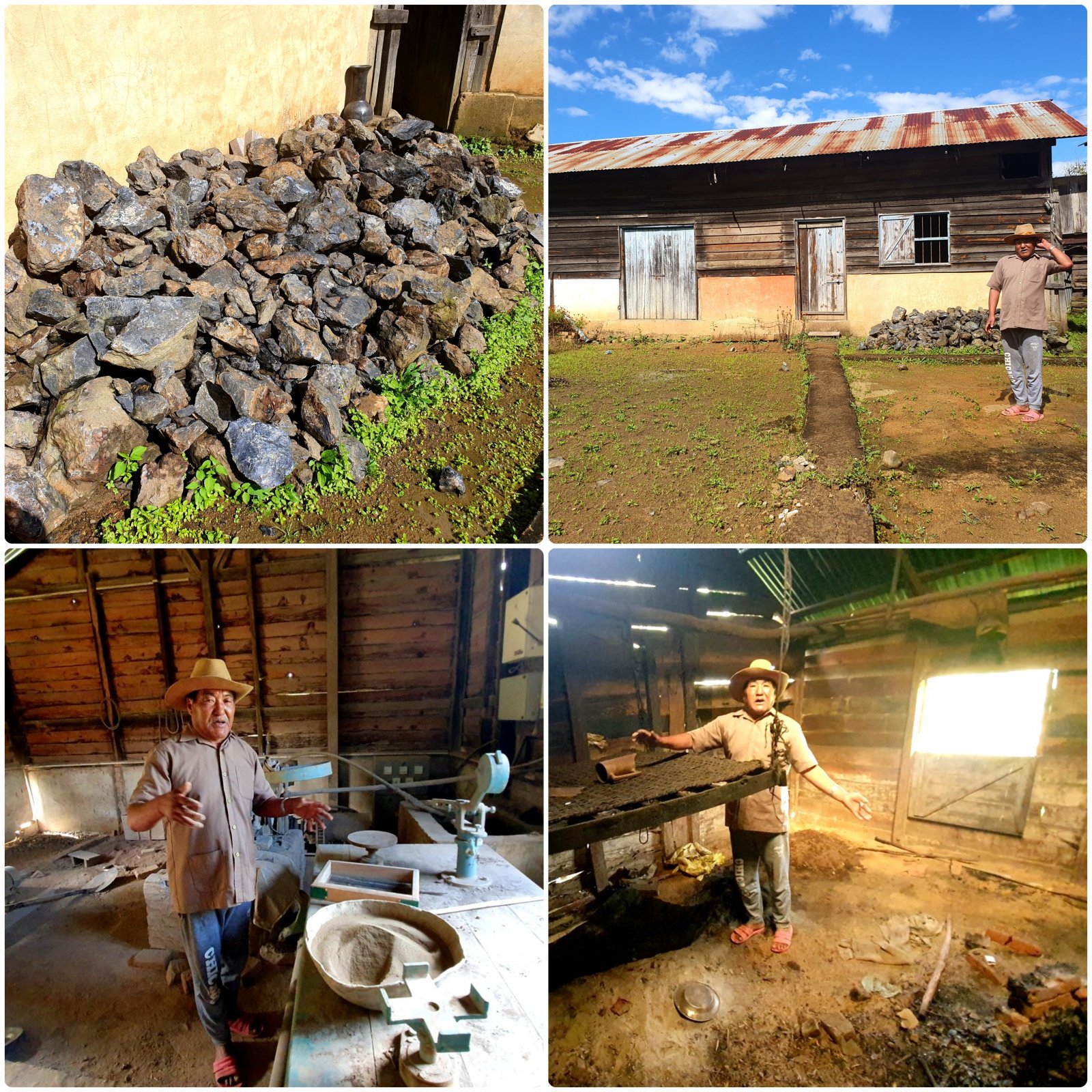Machihan Sasa Moulding A Niche In Pottery Crafts
Dec 16, 2019
Story


The story of Manipur’s black pottery from Longpi
A unique pottery made from a mix of ground black serpentine stone and special brown clay found only in Longpi in Ukhrul district in Manipur is gaining popularity in different parts of India and across the globe for its rustic appeal, utility as a cooking pot with inherent non-stick quality, ideal for steaming and making stews or as a serving dish, vast range of designs but most of all, because it comes from indigenous people, the Tangkhuls.
The ancient art from Longpi Kajui village and Longpi Khullen, 31 kms from Ukhrul district headquarters on NH 150, is now becoming the source of urban merchandise on sale and display in many of the handicraft, and art and culture exhibitions organised in the country.
The credit largely goes to Machihan Sasa from Longpi who founded the Sasa Hampai Pottery Training Cum Production Centre, has been making these black- stone pottery since his childhood after learning the art from his father and selling it through different distribution outlets. Many young aspirants and his son Mathew Sasa have benefitted from his mentoring and many of them have opened their own small- scale industry initiatives.
While taking us on a tour in his production centre, showing the many workshops within the compound and explaining the process involved in making these unique black pots, Machihan Sasa shared why pottery- making can help in a scenario like the one in Manipur infected with serious unemployment and frustration among young people and families.
“Everyone should not be aspiring for government services and entrepreneurship like pottery -making can make people economically sound and even place them in a position to be giving jobs to others.”
Though he has had his own struggles in sustaining and promoting the black pottery, his dedication and resolve to not let the challenges bog him down, are awe inspiring for which he was awarded the National Awards Certificate in 1988 and Shilp Awards in 2008 by Ministry of Textiles, Government of India for his contribution towards art and craft.
Steps in making Longpi Black Pottery: The ground serpentine stone and special clay are mixed, pots manually shaped, polished, sun-dried and baked over a bonfire. Takes a total of 6-10 days process. Picture attached.
The champion comes from a place where the economy driven largely by agriculture, selling forest products like honey, bamboo, cane, timber etc in Ukhrul Bazar and Yangangpokpi Bazar where the local population sell away their products in addition to handloom and handicraft, livestock, poultry and sericulture faces the barrier imposed from weak communication linkages since the days of tribal chiefs and the Imphal-Ukhrul road, 78 kms in length remains the only connecting road in Ukhrul.
In a region where the major challenges to sustain business are marketing and distribution owing to isolation, poor quality roads or a total absence of connecting roads and lack of infrastructure, here is a man who is never giving up on the dream of building a larger training centre, a guest house to host the foreign and domestic tourists who come to visit him every year and Longpi Pottery to become a hallmark of Manipur’s tribal heritage.
The writer is an award-winning rural reporter for print and radio.
https://www.youtube.com/watch?v=aNAD5VaE02I&feature=youtu.be




